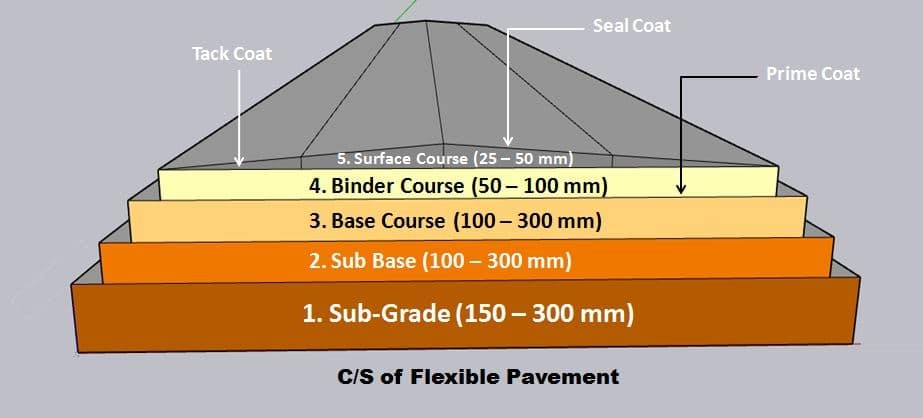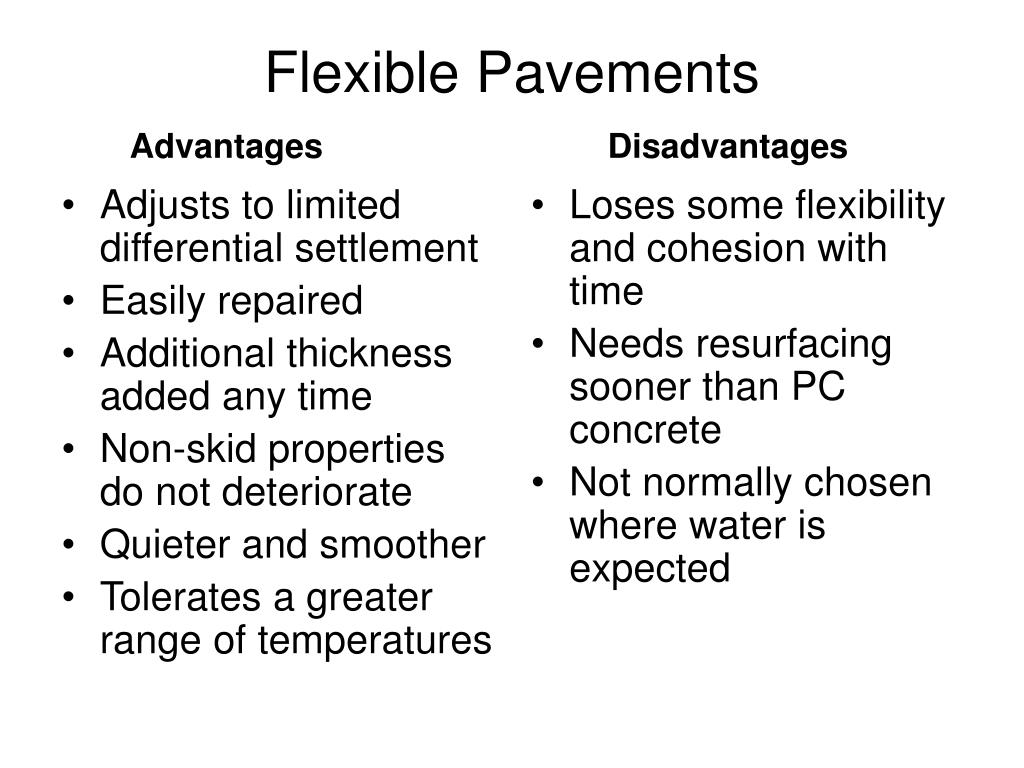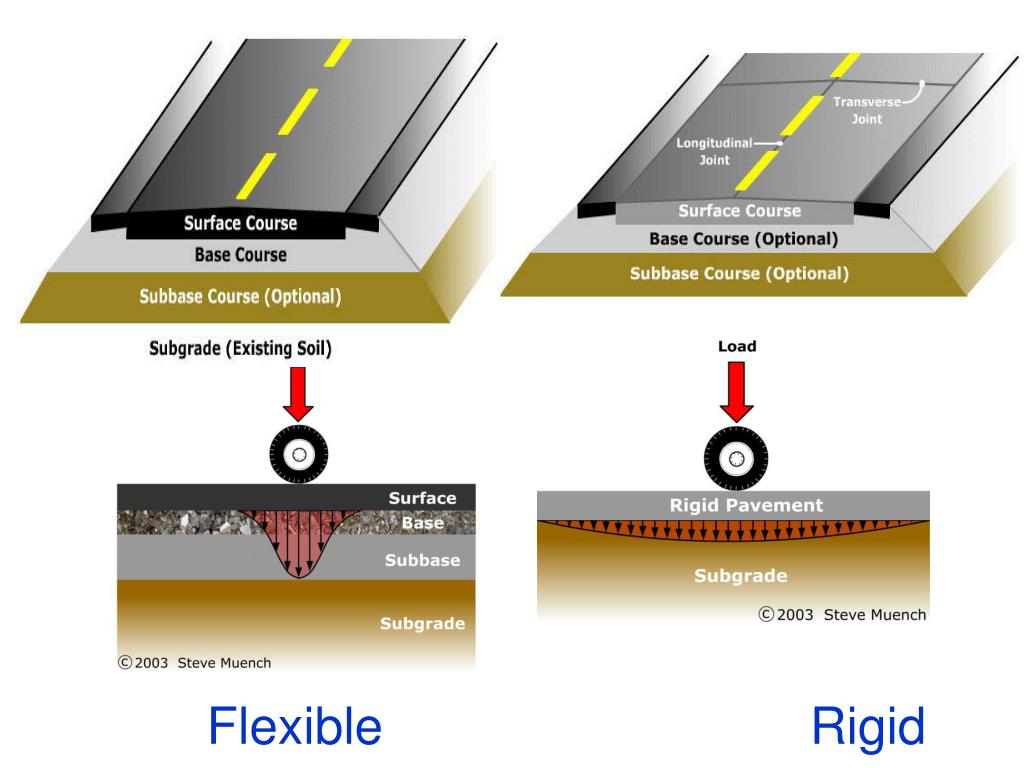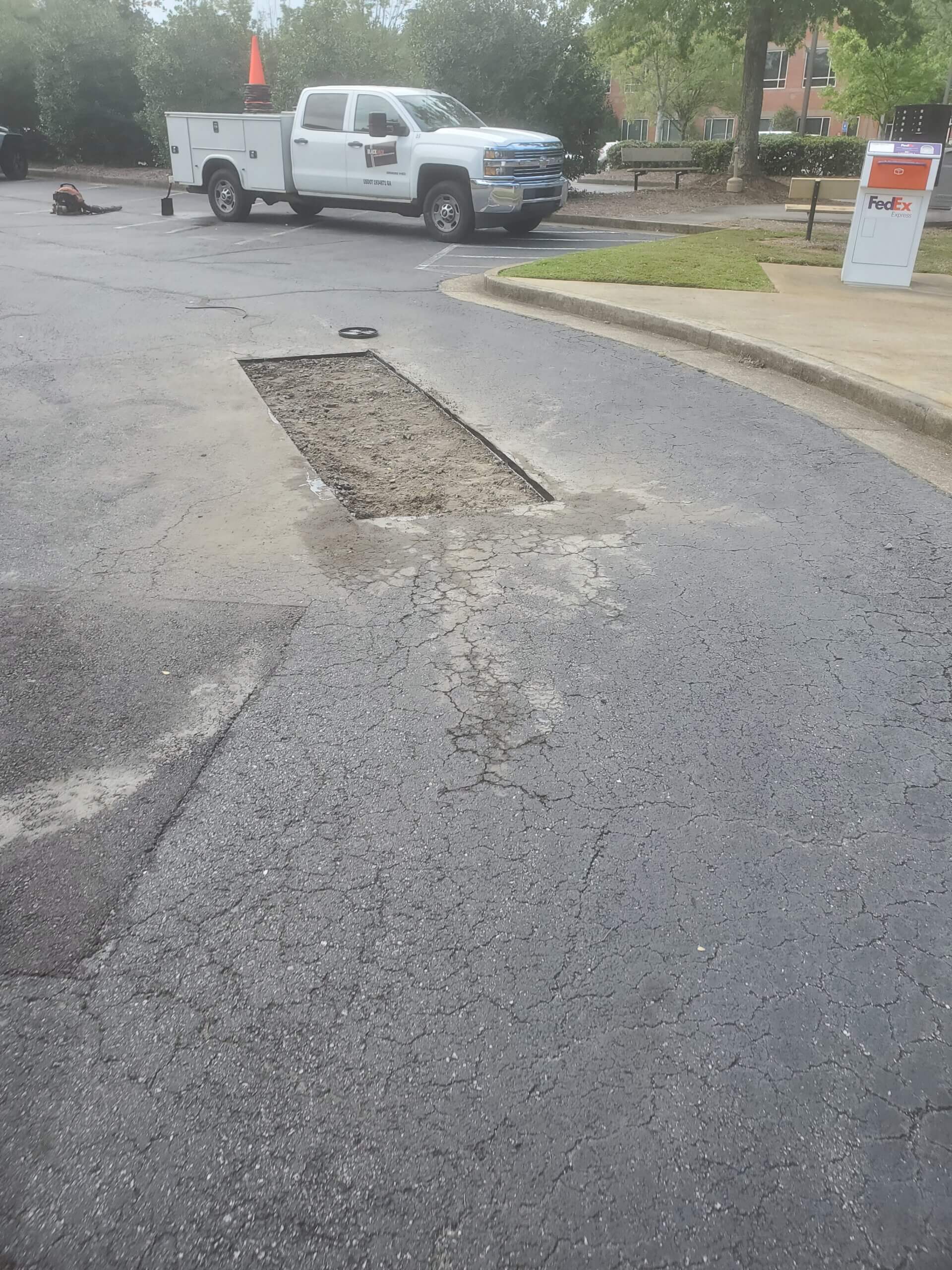Flexible Pavement Presentation
| Introduction to Flexible Pavement | ||
|---|---|---|
| Flexible pavement is a type of road surface that is designed to accommodate deformations and flex under traffic loads. It is composed of multiple layers, each with a specific function, to provide strength, durability, and flexibility. The flexibility of this pavement type allows it to distribute loads and adapt to changes in temperature and moisture. | ||
| 1 | ||
| Structure of Flexible Pavement | ||
|---|---|---|
| The structure of flexible pavement consists of several layers, including the subgrade, subbase, base, and surface layers. The subgrade layer is the native soil or improved soil beneath the pavement, providing support and stability. The subbase and base layers are made of aggregate materials, providing additional support and strength to the pavement structure. | ||
| 2 | ||
| Materials Used in Flexible Pavement | ||
|---|---|---|
| The materials used in flexible pavement construction include aggregates, bitumen, and additives. Aggregates, such as crushed stone or gravel, provide strength and stability to the pavement layers. Bitumen, a sticky black substance, acts as a binder to hold the aggregates together and provide flexibility. | ||
| 3 | ||
| Advantages of Flexible Pavement | ||
|---|---|---|
| Flexible pavement offers excellent flexibility, allowing it to withstand heavy loads and deformations without significant damage. It provides good skid resistance, reducing the risk of accidents and improving safety for road users. The maintenance and repair of flexible pavement are relatively easy and cost-effective compared to other pavement types. | ||
| 4 | ||
| Disadvantages of Flexible Pavement | ||
|---|---|---|
| Flexible pavement requires regular maintenance, including crack sealing and periodic resurfacing, to maintain its performance. It can be susceptible to deformation and rutting under high traffic volumes and heavy loads. The lifespan of flexible pavement is generally shorter compared to rigid pavement types. | ||
| 5 | ||
| Design Considerations for Flexible Pavement | ||
|---|---|---|
| The design of flexible pavement takes into account factors such as traffic volume, soil characteristics, climate conditions, and expected lifespan. The thickness and composition of each pavement layer are determined based on the anticipated loadings and properties of materials. Flexible pavement design also considers factors like drainage, slope, and surface texture to ensure adequate performance. | ||
| 6 | ||
| Maintenance of Flexible Pavement | ||
|---|---|---|
| Regular maintenance activities for flexible pavement include crack sealing, pothole patching, and surface treatments. Periodic resurfacing may be required to restore the pavement's smoothness and skid resistance. Proper drainage maintenance is crucial for preventing water damage and extending the life of the flexible pavement. | ||
| 7 | ||
| Environmental Impact of Flexible Pavement | ||
|---|---|---|
| Flexible pavement is considered environmentally friendly due to its potential for recycling and reuse. The use of recycled aggregates and reclaimed asphalt pavement (RAP) reduces the demand for new materials and conserves natural resources. Proper disposal and management of construction waste during flexible pavement construction are essential to minimize environmental impact. | ||
| 8 | ||
| Applications of Flexible Pavement | ||
|---|---|---|
| Flexible pavement is commonly used for various road types, including highways, urban roads, and rural roads. It is suitable for areas with high traffic volumes and heavy loads, such as trucking routes and industrial areas. Flexible pavement can also be used for airport runways, parking lots, and other light-duty applications. | ||
| 9 | ||
| Conclusion | ||
|---|---|---|
| Flexible pavement is a versatile and widely used road surface that offers excellent flexibility, durability, and strength. Its design and construction require careful consideration of various factors to ensure long-term performance. With proper maintenance and regular inspections, flexible pavement can provide safe and reliable transportation infrastructure for many years to come. | ||
| 10 | ||
| References (download PPTX file for details) | ||
|---|---|---|
| Your first bullet... Your second bullet... Your third bullet... |  | |
| 11 | ||









